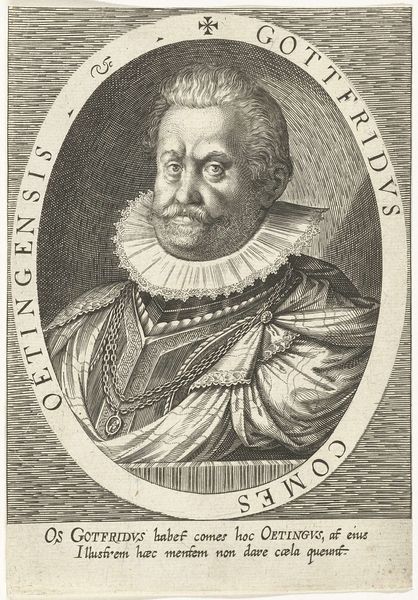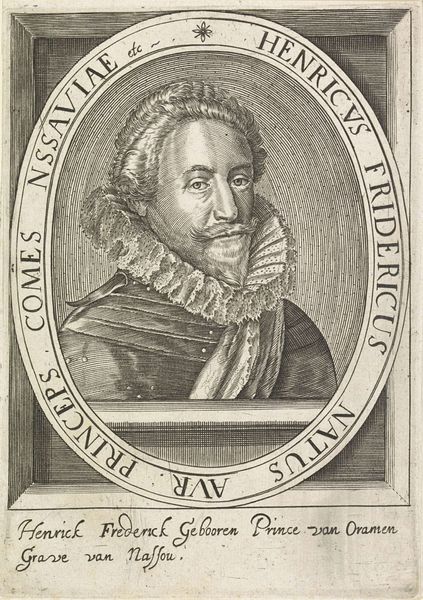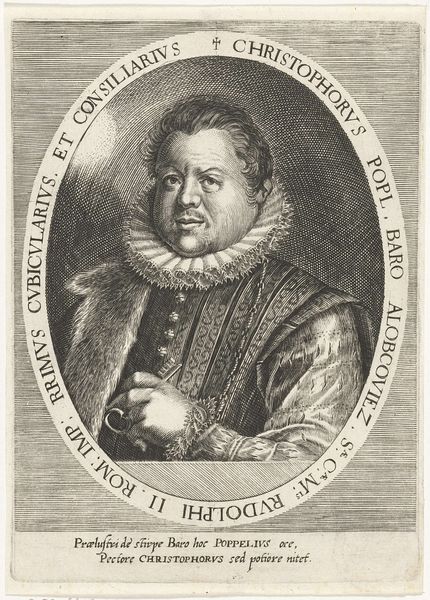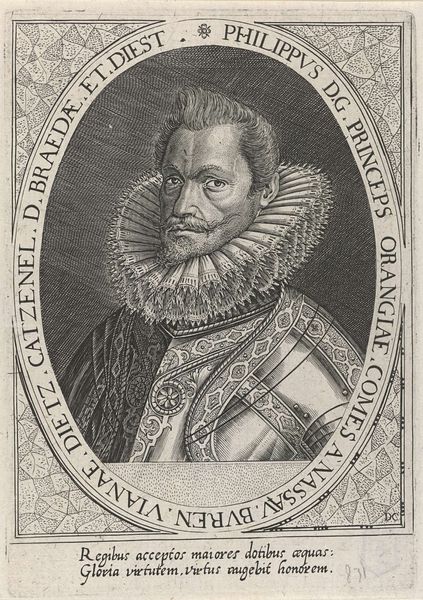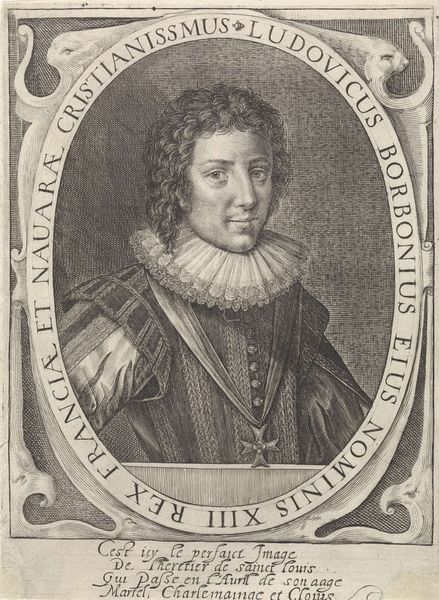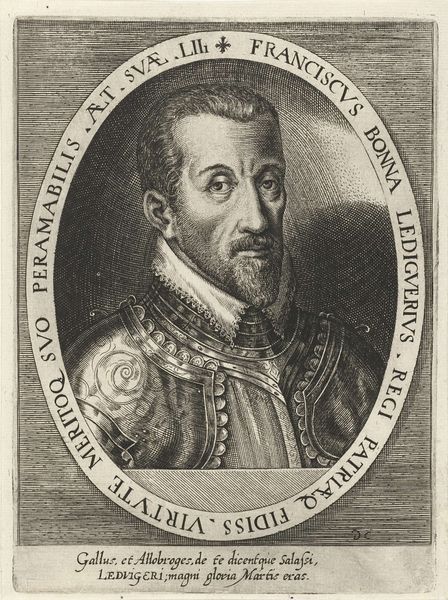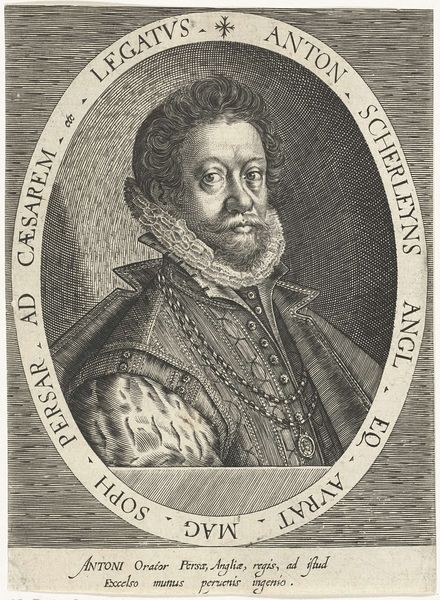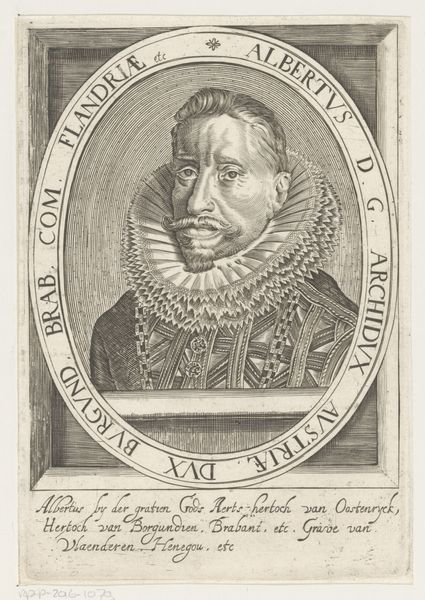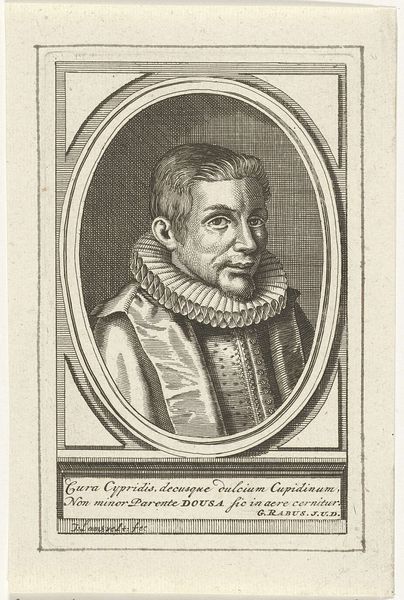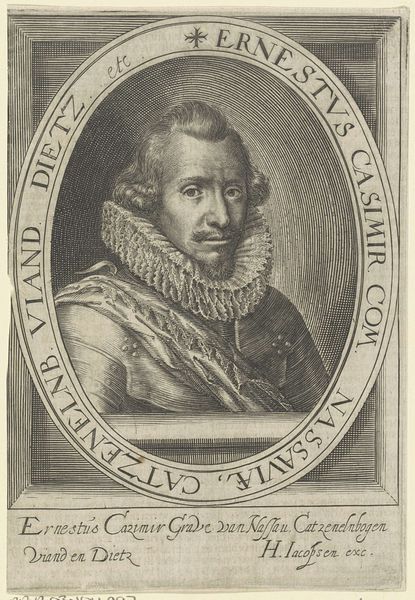
engraving
#
portrait
#
aged paper
#
baroque
#
old engraving style
#
figuration
#
line
#
engraving
Dimensions: height 228 mm, width 128 mm
Copyright: Rijks Museum: Open Domain
Curator: Dominicus Custos rendered this likeness of Jacob, Margrave of Baden-Hachberg, sometime between 1600 and 1604. The work, residing here at the Rijksmuseum, employs engraving to bring Jacob to life on aged paper. Editor: The density of lines forming shadows around his face creates a solemn gravity. It almost feels… oppressive. The sheer volume of fine, etched lines to give him form. What does this tell us about him, historically? Curator: Jacob was, in effect, caught between historical movements. He was Margrave during a period of shifting allegiances and religious turmoil, a member of a lineage whose choices determined regional power. His elaborate armor and the imposing text surrounding the portrait are meant to assert authority and lineage during a time of upheaval. Editor: Authority certainly bleeds from this artwork, it has the classical baroque style in full measure. This linear precision serves more than just representation. Notice the composition: an oval framing, isolating Jacob within a ring of titles, effectively solidifying his place in the world. The armor's metallic sheen achieved only through painstaking detail. It is like he’s entombed alive. Curator: The very medium reflects the socio-political context. Engravings like this were relatively reproducible, offering a powerful propaganda tool to circulate his image and thus his authority within Baden and beyond. It helped reinforce his standing among allies and subjects alike, quite the opposite of any entombment! Editor: Well, perhaps 'entombment' is too harsh. There's definitely a sense of careful preservation. I note that Custos opted for a profile view, almost like a coin, or a classical bust. The line work accentuates this by creating depth and realism and offering an enduring sense of steadfastness and nobility. Curator: Precisely! And the inscriptions above and below are essential. The Latin phrases function much like a CV. These linguistic markers declare not only his name and titles but also poetic praises which further solidify his elevated status within society and memory. The entire construction performs political work. Editor: I see your point; context gives these formal choices greater substance. A somber profile becomes a calculated statement about Jacob’s power. Ultimately, the composition and the etching, like a form of encoding of this important ruler, create a fascinating, rich portrait of nobility from a bygone era.
Comments
No comments
Be the first to comment and join the conversation on the ultimate creative platform.

